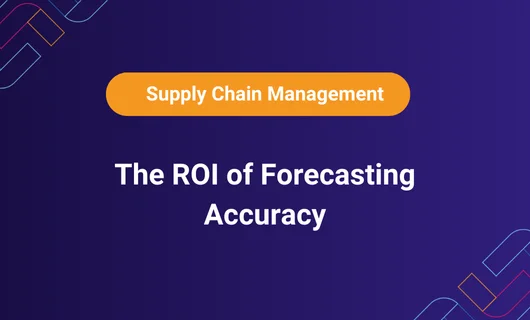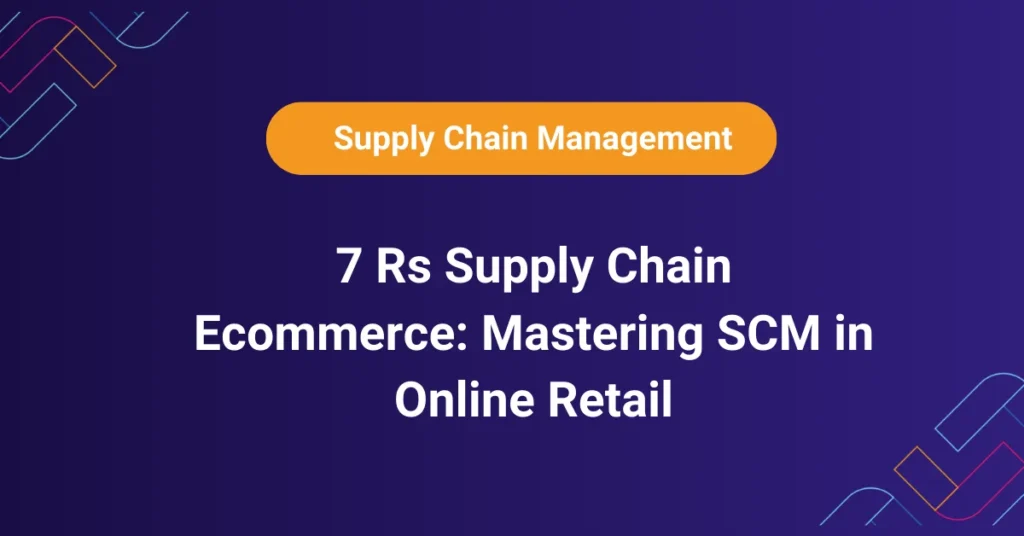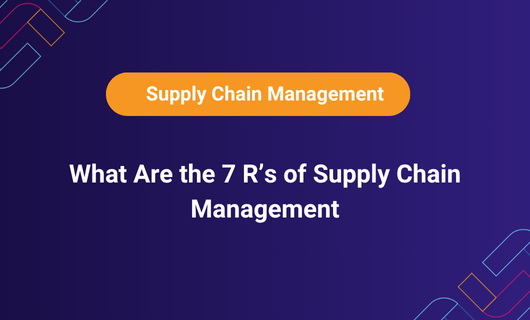For high-revenue ecommerce brands, the challenge isn’t just selling more—it’s ensuring that cash flows freely and isn’t trapped in excess inventory. The real challenge isn’t selling products; it’s managing how much capital gets tied up in inventory. Every pallet of overstock sitting idle in the warehouse means less cash available for marketing, product development, or expansion. So the question every operations leader faces is: Why is so much of my cash locked in inventory? And more importantly, what would my business look like if I could forecast demand 20% more accurately? Understanding what does a supply chain manager do can shed light on this—inventory forecasting doesn’t just prevent stockouts, it directly improves cash flow, shortens the cash conversion cycle, and strengthens your ability to scale with confidence.
Why Forecasting Impacts Cash?
Inventory is one of the largest working capital commitments for ecommerce brands. Each purchase order pulls cash out of the business long before a customer pays for the product. That gap is your cash conversion cycle, and forecasting directly influences it.
When your forecasts are accurate, you:
Avoid overstock, which ties up capital in unsold products.
Prevent stockouts, which lose revenue and weaken customer trust.
Align purchase orders with actual demand and supplier lead times.
A Shopify brand with $2M in inventory that consistently over-forecasts by 20% locks up $400K unnecessarily. Improving forecasting accuracy frees that cash to reinvest in growth.
Choosing a Model
The first decision is selecting the right forecasting model. Some brands rely on spreadsheets and simple averages, while others adopt machine learning or ERP-driven models.
Which forecasting model should I start with?
If you’re early stage or running a lean team, start with simple weighted moving averages or exponential smoothing. These methods adapt to recent sales trends without overcomplicating the process. As your SKU count and order velocity increase, consider regression or machine learning models that incorporate seasonality, promotions, and even external market factors, and integrate them with ERP SCM systems to unify inventory, sales, and supply chain data, enabling more accurate forecasting, better operational coordination, and improved decision-making across the business.
The trade-off is accuracy versus complexity. Simpler models are easier to maintain but risk higher MAPE. Advanced models improve accuracy but require cleaner data and system integration.
Setting MAPE Targets
Forecasting accuracy is typically measured with MAPE (Mean Absolute Percentage Error). This metric tells you, on average, how far off your forecast is from actual sales.
What is a good MAPE target for ecommerce?
10–20% → strong for high-volume, stable SKUs.
20–30% → acceptable for long-tail SKUs or products with volatile demand.
>30% → signals risk to cash flow; overstock or stockouts are highly likely.
Recommended MAPE Targets by Product Type
| Product Category | Typical Demand Pattern | Good MAPE Target | Cash Flow Risk if Higher |
|---|---|---|---|
| Core SKUs (fast sellers) | Steady, predictable | 10–15% | High inventory costs or lost sales |
| Seasonal items | Spiky (e.g., holiday) | 20–25% | Overstock post-season |
| New launches | Unstable, no history | 25–30% | High chance of stockouts |
| Long-tail SKUs | Low volume, irregular | 20–30% | Working capital tied up |
Seasonality and Promotions
Ecommerce demand isn’t flat. It spikes around seasons, events, and promotions. Ignoring these factors creates large forecasting errors.
How do I account for seasonality and promos?Start by analyzing historical sales during Q4, back-to-school, or other industry peaks. Add uplift multipliers based on marketing campaigns, influencer pushes, or marketplace promotions like Prime Day. The most effective brands overlay marketing calendars with historical demand to build more realistic forecasts, a critical step in ecommerce inventory forecasting that helps balance stock availability with cash flow and operational efficiency.
The risk of ignoring seasonality is twofold: excess safety stock when demand is low, and painful stockouts when demand surges. Both harm cash flow—one by locking it up, the other by missing sales.
Supplier Lead Times
Your suppliers’ lead times and payment terms directly affect working capital. If your supplier requires 30% upfront with 90-day shipping, that’s three months of frozen cash.
How do long lead times change the plan?
They extend your cash conversion cycle. The longer the lead time, the earlier you need to commit capital. Forecasting must therefore factor in supplier reliability, production delays, and transit risks. Many brands build in buffer stock for long-lead items while tightening EOQ (Economic Order Quantity) on fast movers.
The balance is tricky: too much buffer stock drains cash, too little risks lost sales. The best practice is linking forecasting models directly to supplier calendars and PO planning.
From Forecast to PO Plan
Forecasts alone don’t move inventory—purchase orders do. Translating demand forecasts into an actionable PO plan is where cash flow discipline happens.
How are forecasts converted into purchase orders?
Generate demand by SKU based on the forecast.
Adjust for safety stock and MOQ (minimum order quantity).
Apply supplier lead times to time POs correctly.
Align PO schedules with cash availability to avoid liquidity crunches.
This PO plan becomes the operating rhythm between demand planners, finance teams, and suppliers. Done well, it ensures inventory flows smoothly without starving the business of cash.
Data Required for Forecasting
What data is required for forecasting?
Historical sales by SKU and channel.
Marketing and promotional calendars.
Supplier lead times, MOQs, and payment terms.
Returns, cancellations, and refunds.
Channel-level velocity (Shopify, Amazon, wholesale).
Data quality matters more than model sophistication. A complex algorithm built on poor data produces poor forecasts. Brands investing in clean, structured data see the fastest gains in forecasting accuracy and cash flow.
Forecast Updates
How often should forecasts be updated?
Weekly for fast-moving ecommerce brands.
Monthly for stable categories.
Real-time adjustments when promotions or demand shocks occur.
Frequent updates ensure you’re working with current information, not outdated assumptions. Many fast-scaling brands link their WMS/OMS data directly into forecasting tools for automated weekly refreshes.
Forecasting Accuracy Metrics Compared
How does forecasting accuracy improve cash flow?
By reducing errors, you cut safety stock, protect margins, and improve predictability. But MAPE isn’t the only metric. Other accuracy measures include MAD and RMSE.
Forecasting Metrics Comparison
| Metric | What It Measures | Best For | Weakness |
|---|---|---|---|
| MAPE | Avg % error | Benchmarking across SKUs | Sensitive to very low-volume SKUs |
| MAD | Avg absolute error in units | High-volume SKUs | Doesn’t scale across categories |
| RMSE | Error variance (penalizes large misses) | Long-term forecasting | Harder to interpret financially |
Most ecommerce brands use MAPE for executive reporting since it ties directly to financial outcomes. MAD and RMSE are useful for operational fine-tuning.
Example: The ROI of Forecasting Accuracy
A DTC apparel brand with 500 SKUs previously ran forecasts with 35% MAPE. They carried $1.5M in average inventory, much of it idle. After implementing a structured demand planning process and targeting 20% MAPE:
Inventory carrying costs dropped by $250K annually.
Stockouts reduced by 40%, adding $600K in retained revenue.
Cash conversion cycle shortened by 15 days, freeing nearly $400K in liquidity.
Accurate demand forecasting accuracy isn’t just operational hygiene—it’s a direct driver of ROI.

Frequently Asked Questions
For early-stage or lean teams, start with simple weighted moving averages or exponential smoothing. These adapt to recent sales trends and are easy to maintain. Advanced regression or machine learning models can be adopted as SKU count and complexity grow.
10–20% for high-volume, stable SKUs
20–30% for long-tail or volatile SKUs
30% indicates high risk of overstock or stockouts
Analyze historical sales for seasonal periods and promotions. Apply uplift multipliers from marketing calendars and campaigns to adjust forecasts accurately.
Longer lead times extend the cash conversion cycle, requiring earlier PO commitments and buffer stock. Accurate forecasting must include supplier reliability and transit risks.
Forecasts are translated into POs by adjusting for safety stock and MOQs, timing orders according to lead times, and aligning schedules with available cash.
Historical sales by SKU/channel, promotional calendars, supplier lead times and MOQs, returns/cancellations, and channel-level velocity (Shopify, Amazon, wholesale).
Forecasting as a Cash Strategy
Inventory forecasting is more than a back-office task—it’s a frontline strategy for unlocking cash, reducing risk, and fueling growth. By tightening MAPE targets, accounting for seasonality, managing supplier lead times, and converting forecasts into disciplined PO plans, brands can shorten their cash conversion cycle and scale with confidence, often leveraging insights from supply chain consulting firms to implement best practices and optimize processes.If your business is sitting on idle stock or constantly firefighting stockouts, it’s time to rethink your forecasting.
Schedule a Call with a Brankit Supply Chain Expert today—and turn better forecasts into stronger cash flow.





